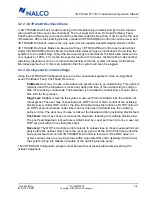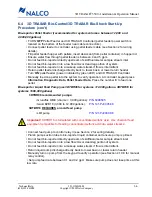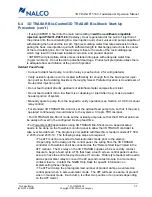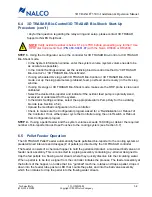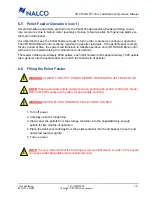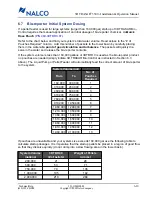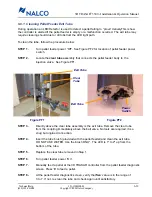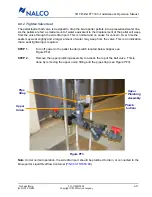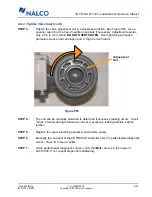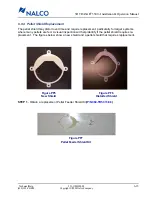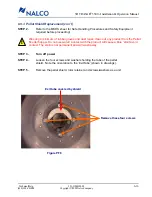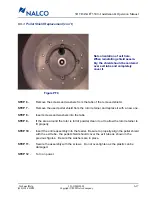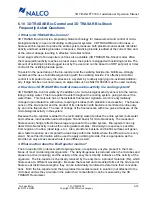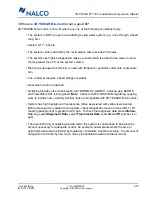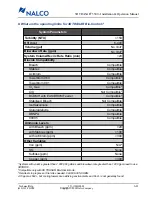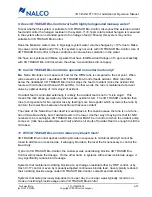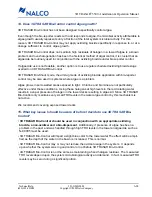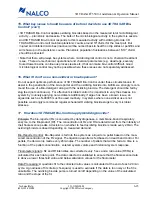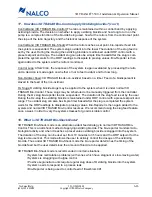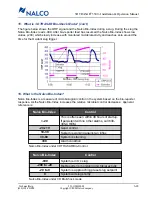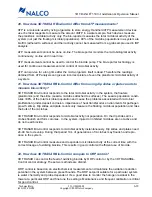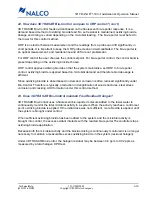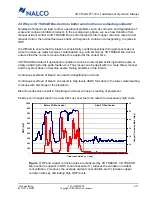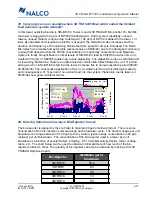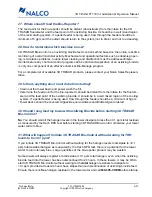
521-OM0108.88
Copyright
2009 Nalco Company
6-18
Technical Help
(630) 305-CHEM
3D TRASAR
5500 - Installation & Operation Manual
6.10 3D TRASAR Bio-Control and 3D TRASAR Bio-Shock
Frequently Asked Questions
1. What is 3D TRASAR Bio-Control?
3D TRASAR Bio-Control is a proprietary Nalco technology for measurement and control of micro-
biological activity in open recirculating cooling water systems. 3D TRASAR Bio-Control uses a
fluorescent bio-reporter to probe the entire system
,
measure both planktonic and sessile microbial
activity and feed oxidizing biocides in response. Oxidizing biocide is added at the correct time and
at the correct dosage resulting in effective microbial control.
An all slug method of bio-reporter control is also available (3D TRASAR Bio-Shock mode). When
the measured bioactivity reaches a preset value, the system is slugged with oxidizing biocide. The
amount of oxidizing biocide slugged is set by the user and can be based on ORP set point or timer
control of the oxidizing biocide pump.
To assist in the penetration of the bio-reporter and the oxidizing biocide into biofilm we strongly
recommend the use of a BioDetergent along with the oxidizing biocide. For effective microbial
control it is important to vary the stresses in a system by routinely applying non-oxidizers. Addition-
ally, if alga has been a known issue, an algaecide such as NALCO 90005 must be used routinely.
2. How does 3D TRASAR Bio-Control measure bio-activity in a cooling system?
3D TRASAR Bio-Control works by the addition of a micro-biological activity sensor into the recircu-
lating cooling water. This bio-reporter travels throughout the cooling system, going wherever the
water flows. This molecule has a characteristic fluorescent signature, which is enzymatically
changed upon interaction with active, respiring microbes (both planktonic and sessile). The fluores-
cence of the bio-reporter and the product of its interaction with bacteria is monitored continuously
by an in-line fluorometer. The rate of change of the fluorescence with time gives a measure of the
microbiological activity in the system.
Because the bio-reporter is added to the recirculating water, it probes the entire system (bulk water
and surfaces, inaccessible heat exchangers, fill and basin) for microbial activity. The measured
fluorescence change reflects the average response for the entire system. Bio-reporter can only
detect microbial activity in areas the cooling water samples. Obviously, no response is possible
from regions of no-flow (dead legs, etc.). Also, planktonic bacteria and biofilm surfaces will gener-
ate a faster response as compared to areas deep within the biofilm where the diffusion rate is very
small. Since this information will be used to apply oxidizing biocide, this is appropriate, as the
biocide can only access areas where it can diffuse as well.
3. What reaction does the Bio-Reporter monitor?
The bio-reporter (Rx) interacts with dehydrogenase, a respiratory enzyme present in the mem-
brane of most microbiological organisms. The dehydrogenase is produced when the microbes and
algae are active (respiring) and the activity of the enzyme is directly indicative of the activity of the
organism. The bio-reporter is chemically reduced by the enzyme to a product molecule (Rs), which
fluoresces at a different wavelength. Because the reacted and unreacted forms of the bio-reporter
fluoresce at distinct wavelengths, they can be individually monitored to determine their concentra-
tions. Both the bio-reporter and the bio-product molecules remain in solution (not attached to the
microbes) and as they circulate in the water their concentration can be measured by the 3D
TRASAR Fluorometer.

